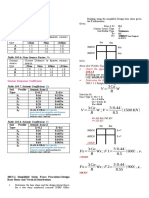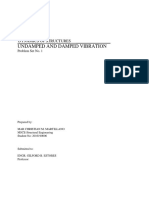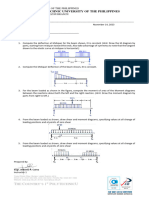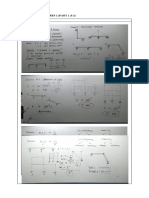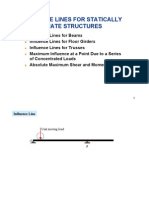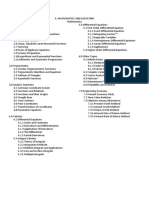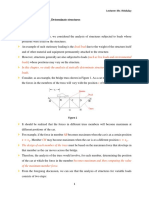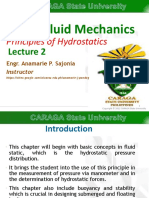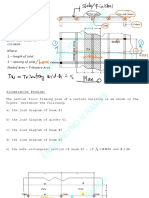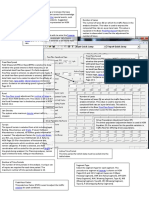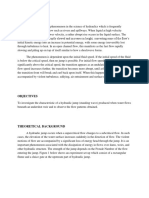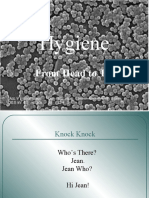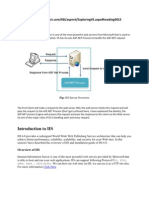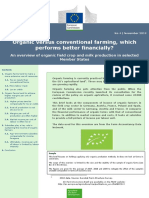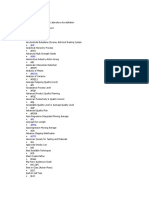0% found this document useful (0 votes)
630 views35 pagesApproximate Analysis
Here are the steps to solve this problem using the cantilever method:
1) Locate the points of inflection (mid-spans of beams and columns)
2) Calculate the centroid of the column areas: X = (1*A + 2*A + 3*A + 1.5*A)/7.5A = 2A
3) Determine the axial forces in each column based on their distance from the centroid:
FAE = -3.5A
FBC = -2A
FCD = -0.5A
4) Determine the shear forces and end moments in each member
5) Draw the bending moment diagrams for column AE and beam EF highlighting the end values
Uploaded by
Syahir HamidonCopyright
© © All Rights Reserved
We take content rights seriously. If you suspect this is your content, claim it here.
Available Formats
Download as PDF, TXT or read online on Scribd
0% found this document useful (0 votes)
630 views35 pagesApproximate Analysis
Here are the steps to solve this problem using the cantilever method:
1) Locate the points of inflection (mid-spans of beams and columns)
2) Calculate the centroid of the column areas: X = (1*A + 2*A + 3*A + 1.5*A)/7.5A = 2A
3) Determine the axial forces in each column based on their distance from the centroid:
FAE = -3.5A
FBC = -2A
FCD = -0.5A
4) Determine the shear forces and end moments in each member
5) Draw the bending moment diagrams for column AE and beam EF highlighting the end values
Uploaded by
Syahir HamidonCopyright
© © All Rights Reserved
We take content rights seriously. If you suspect this is your content, claim it here.
Available Formats
Download as PDF, TXT or read online on Scribd
/ 35




